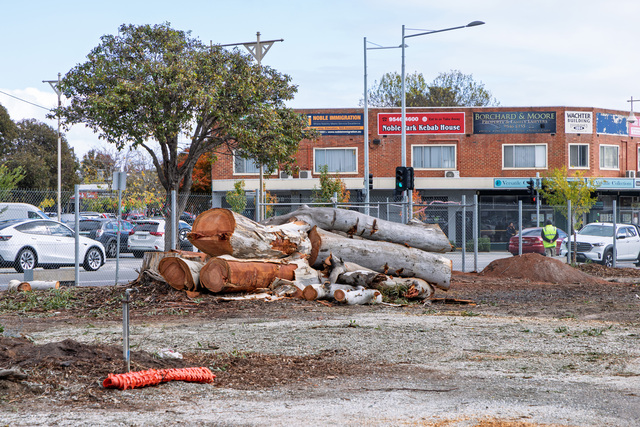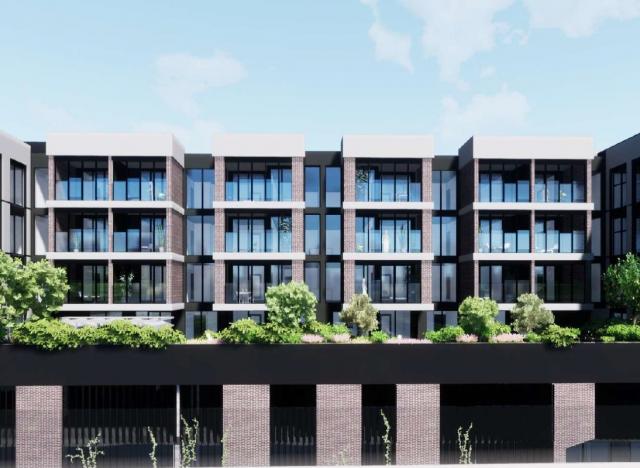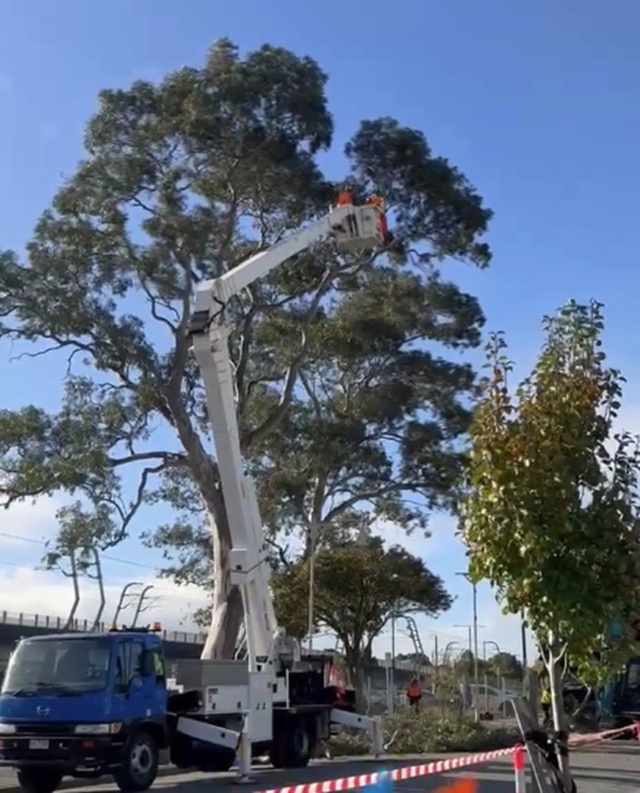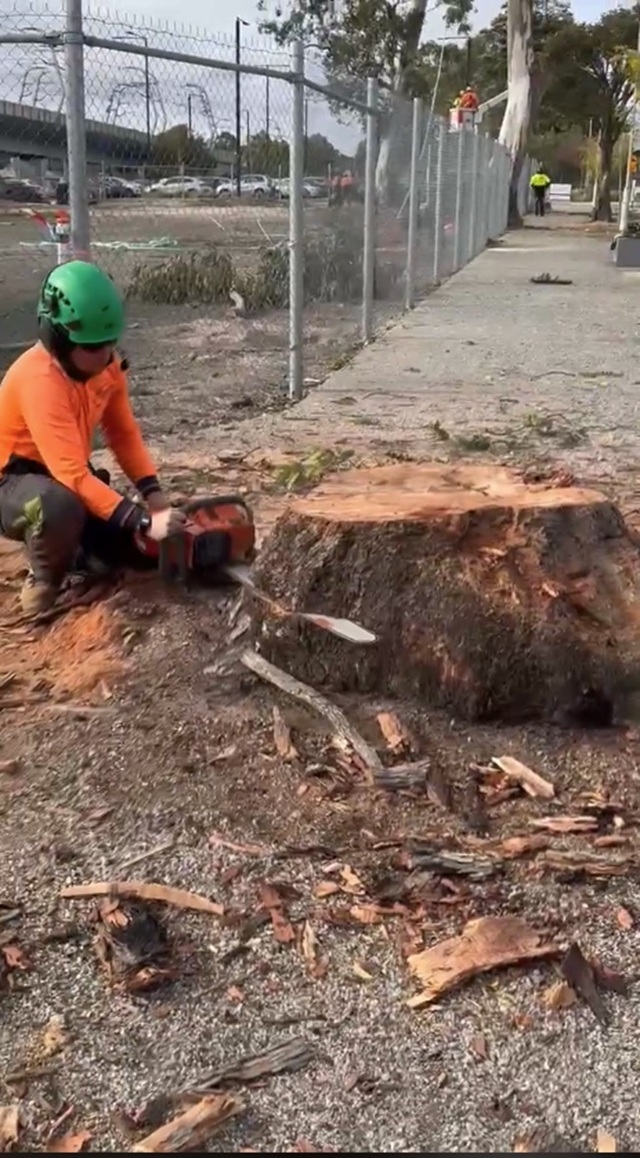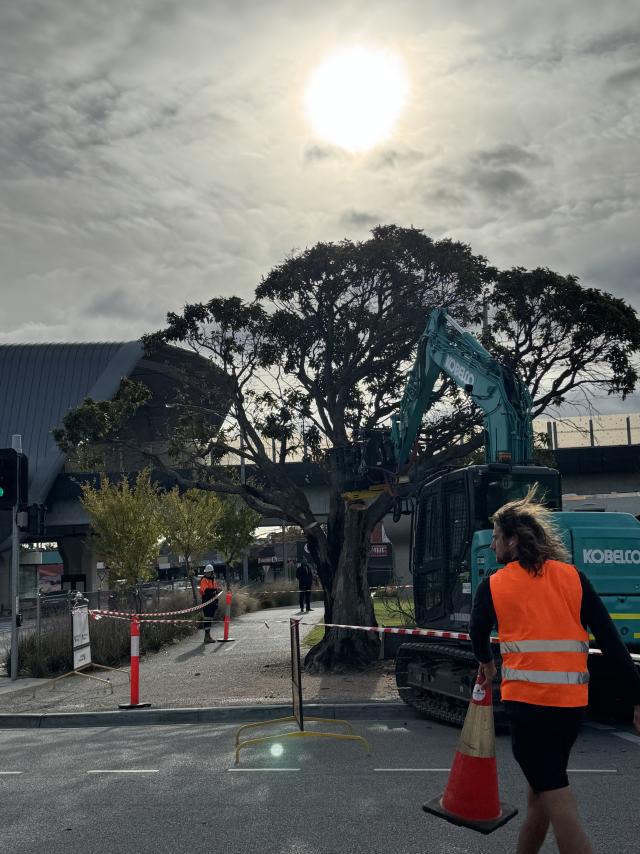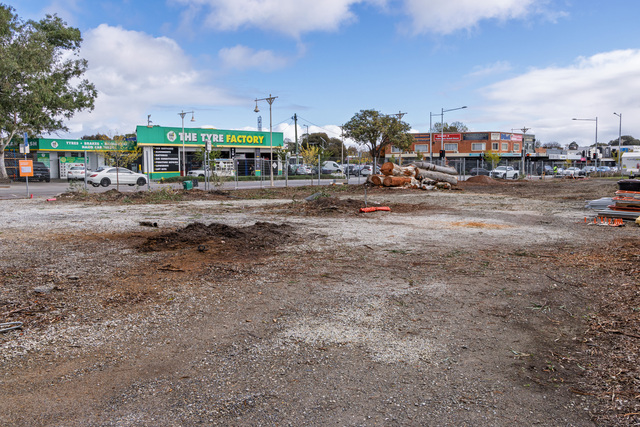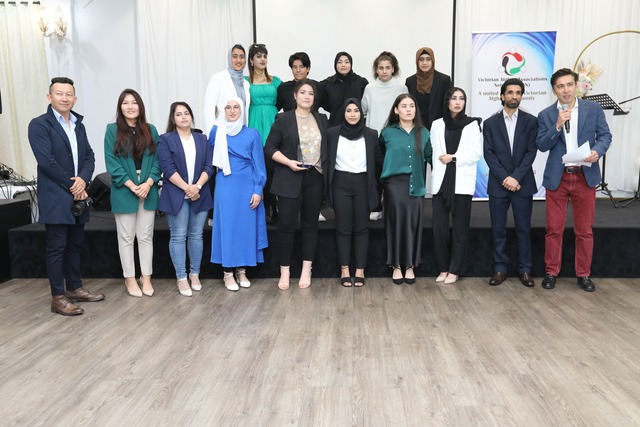Timber and provenance seeds have been preserved from the last of the giant stand of River Red Gums recently felled in Noble Park.
Residents were moved to tears when three trees, including a 20-metre giant, were razed to make way for a 97-unit ‘affordable housing’ apartment tower at 51A Douglas Street on Tuesday 27 May.
In the aftermath, large red logs were piled behind the perimeter fence, earmarked for “community projects”.
“We are pleased to confirm that the timber from the trees will be delivered to our Operations Centre this week for storage,” Greater Dandenong Council city futures executive director Sanjay Manivasagasivam said.
“With our Open Space team, we will explore various options to use the wood for community projects that will benefit our community.”
Provenance seeds were also collected from the former trees, he said.
“This will allow us to plant future red gum trees in Ross Reserve or other suitable locations, using the same genetic material.
“This initiative will help us maintain and preserve the valuable biodiversity of our area.”
In response, resident Gaye Guest posted: “Whoopie do, provenance seeds were collected.. We heard that from (Level Crossing Removal Project) when skyrail was built and have not seen one sapling since 2016!
“We won’t be around to see trees when they are 150-200 years old.”
Last year, the council entered an agreement for the developer to offset the trees with $155,000 for an estimated 15 new trees of 2.5-metres height in Noble Park.
After talks with the proponent, the council argued that retaining the tree would have made the affordable housing project non-viable.
Critics, including ecology expert Dr Gregory Moore, argued the tower could have been designed to preserve the trio of trees on the edge of the 5.9-hectare site.
Even a corner tree, several metres outside the site’s perimeter fence, was levelled.
Mr Manivasagasivam said the trees were removed in accordance with the planning permit and a council decision made last year.
Last year, Dr Gregory Moore told Star Journal that the 20-metre tree’s felling would be a “significant loss”.
“Across Melbourne, we’re losing a lot of trees. If we keep chopping down these trees, we’ll have no 150-to-200-year-old trees in the future.
“In this case, we’d be losing more than one species – about 30-50 other species such as birds, insects and fungi depend on that tree.”
Dr Moore says the issue is with the state’s planning laws, which are “very anti-tree” and “pro-development”.
“We can have much more intense development and we can have green space,” he argues.
Europe and parts of the USA achieve much higher housing density by building “upwards” with two-three storey housing while retaining 40 per cent green space on sites, Dr Moore argues.
“The model of development in Australia brings the biggest return to developers for the smallest cost – very small blocks with very large houses and very little green space.”
Developers may argue that building upwards will cost more.
“Once everyone (builds upwards), the economy of scale kicks in,” Dr Moore counters.
“When they’re developing land, they pay less for the land and maintain their profit margins.
“The ones who don’t get as much are the greenfields’ landowners who get less windfall profits from selling up.”
The apartments were approved by Planning Minister Sonya Kilkenny, who ordered Greater Dandenong Council to issue a permit despite a 76-car space shortfall.
The council sought legal advice on refusing the removal of the two River Red Gums partly on council land.
It apparently wavered when told the developer could potentially sue for $1 million.
In the Government’s explanatory report, the tower is described as a “priority project” which was expedited to help Victoria’s post-Covid economic recovery.
It would provide “affordable housing in a key location” and extra commercial activity on what was “under-utilised” land.

